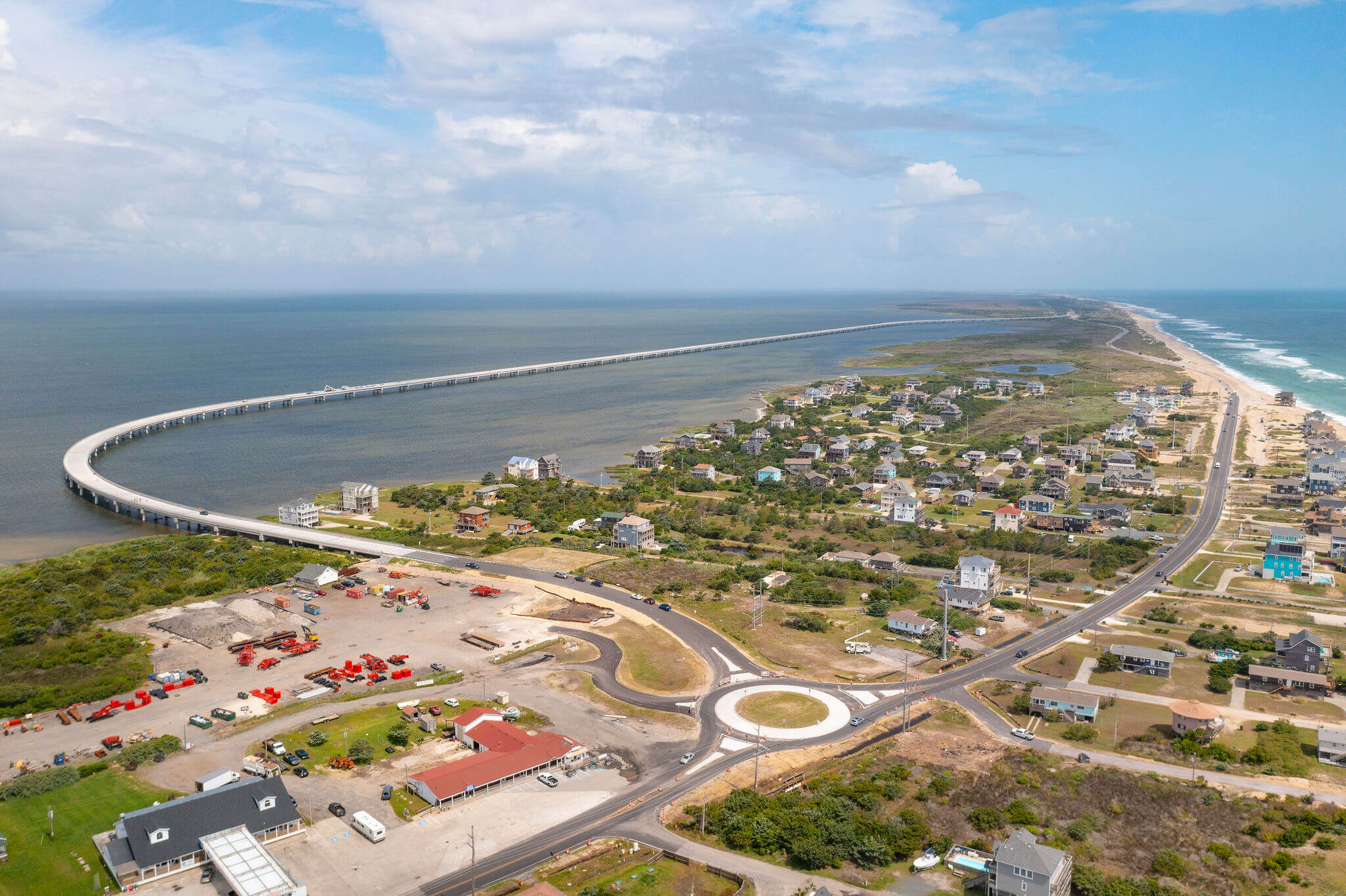Building Rodanthe Bridge
In early 2017, the North Carolina Department of Transportation (NCDOT) awarded Flatiron a $145 million design-build contract to elevate a portion of N.C. 12 along a new 2.4-mile span dubbed Rodanthe Bridge. N.C. 12 serves as the sole thruway for several communities strung along the state’s Outer Banks region, a series of sandy barrier islands that form an extensive arc beyond the mainland in the Atlantic Ocean, which also serve as a major tourist destination. N.C. 12 is prone to erosion, washouts, and flooding from storms, snarling traffic and marooning residents, particularly residents of the small community of Rodanthe.
To solve these issues, NCDOT accepted the design-build proposal submitted by Flatiron, in partnership with designer RK&K, to construct a “jug handle” bridge that elevates N.C. 12 above the Pamlico Sound, redirecting the thruway from its current path along the sandy barrier islands to the span above the waterway — west of the Outer Banks and the Atlantic Ocean. From north to south, the bridge will arc westward then eastward: from a southern point of Pea Island National Wildlife Refuge to a northern point in Rodanthe. This section of N.C. 12, as previously built, is susceptible to storm breaches and was damaged in 2011 by Hurricane Irene and in 2012 by Hurricane Sandy.
By extending into the Pamlico Sound, the design also minimizes impact to sensitive environmental areas and ocean and sound shoreline on the islands, as well as to the community of Rodanthe. In addition, Rodanthe Bridge ensures safe and reliable passage for travelers (a key project objective), as well as providing better traffic flows among the Outer Banks communities, beaches, and protected areas. When the bridge opens, N.C. 12, as previously built, will be turned over to the wildlife refuge and in Rodanthe, the former thruway will be used by travelers and tourists to access private property.
The Outer Banks poses several challenges, including the environmentally sensitive lands, limited labor force, and limited access to materials. To meet these challenges, Flatiron developed several innovative approaches to the project. The first of these being Flatiron’s Advancing Rail System, which combines the ability to straddle the newly built bridge structure and to leap frog temporary work sections. We also emphasized the use of precast elements throughout the project: precast piling, caps, girders, deck panels, among others.
In addition, the design-build process allowed design, environmental permits, utility relocation, and construction to take place under one contract. According to NCDOT, this process resulted in a reduction in construction time and helped the department avoid cost inflation, in addition to mitigating environmental impact and travel delays.
Distinctive “jug handle” design minimizes impact: sensitive environmental areas in the Outer Banks, ocean and sound shoreline, and the community of Rodanthe, NC
2.4-mile bridge will elevate N.C. 12, which currently runs parallel to Atlantic Ocean shoreline over a flat, sandy surface
Bridge will ensure safe and reliable passage for travelers, as well as providing better traffic flows among Outer Banks’ communities, beaches, and protected areas

